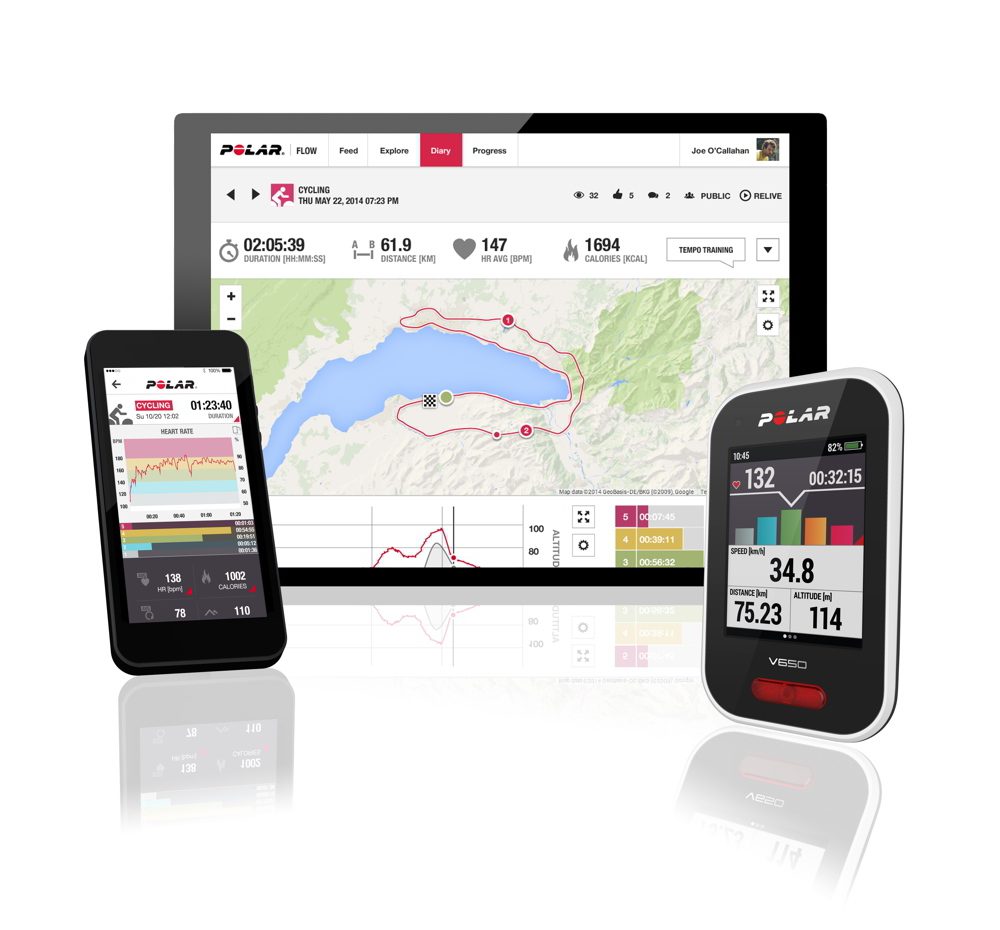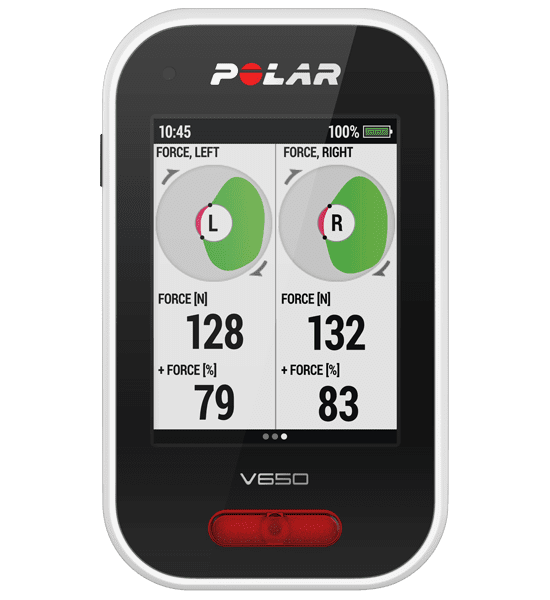Review: Polar V650 cycling computer
Polar has arrived on the GPS bike computer scene with the release of the Polar V650. The the device's release, it seemed the Finnish company was once again getting competitive in the bike computer market. Polar was a dominant force in the early 2000s and brought technical data to the forefront of training with their heart-rate monitors. Today Polar is aiming to have the V650 bring it back into its top form.

by Joel Vosburg

Polar has arrived on the GPS bike computer scene with the release of the Polar V650. The the device’s release, it seemed the Finnish company was once again getting competitive in the bike computer market. Polar was a dominant force in the early 2000s and brought technical data to the forefront of training with their heart-rate monitors. Today Polar is aiming to have the V650 bring it back into its top form.
The V650 takes its design cues from popular smartphones produced by companies such as Samsung and Apple with similar central buttons and touch-screen functions for familiarity. The central “home” button has dual purpose as the start/stop and lap controller. The buttons on the side pull up a sub-menu that contains calibration and sensor control as well as the on/off functions. The main controls on the V650 are controlled by touch similar to an iOS or Android operating system. A functional pull-down menu allows you to control settings such as screen brightness, sounds and a unique feature of safety lighting.

The V650 employs GPS to measure speed, distance and route tracking resulting in the most accurate data recording possible. This data is displayed throughout your ride in a large, colour, 2.8” screen. Also featured in the device’s hardware is a Bluetooth Smart capability, which is designed to connect with specific Bluetooth-enabled power meters such as the Look Keo power pedals. The Bluetooth Smart is designed to save on battery life compared to its ANT+ counterparts. This features seems to work very well as the average battery life on this device is more than 12 hours, making it a stand out in this category.

Heart-rate monitoring is what put Polar on the map in fitness tracking early on and they continue to show that they are still the industry leaders in this category. The V650 displays heart-rate data connected through Bluetooth-enabled devices. The device displays this information in real time with bar graphs that display total time spent in the six zones: very light (50-60 per cent), light (60-70 per cent), moderate (70-80 per cent), hard (80-90 per cent) and maximum (90-100 per cent). If you utilize heart-rate zones for your training, Polar seems to be one up on its competitors and this device may be your best choice moving forward.
An interesting feature on the V650 is the safety light featured on the front end of the device. Now this light is not bright enough to illuminate the road in front of you, but it will be able to warn drivers of your presentence in low-light situations. It’s a nice add-on to a device already filled with great features.
Although this device does not directly upload or connect to Strava, rides can be uploaded manually to Strava or automatically to Polar’s software called “Flow.” You can upload your most recent rides to Flow by plugging the device into your computer or by connecting to the device via Bluetooth. Flow displays a range of data from your ride such as speed, distance and route. Flow also has a feature called “Relive,” which takes your uploaded route and syncs it with a Google Maps/Streetview feature. Relive will take you through your ride through a short video presentation highlighting the points where max exertion, elevation and speed were achieved. The whole video is put together with a soundtrack and images of the ride route. This can be a great feature for the social media savvy who want to share the story of their epic ride on Facebook.
Polar has also taken note of early reviews of its V650 and has promised updates in the fall that will allow you to download maps before your ride to the device and to connect directly to Strava. These moves show Polars commitment to its customers and device. Polar says that this device will only get better after you purchase it through frequent software updates.
Overall, the Polar V650 is very comparable to the market leaders of Garmin’s Edge 510 and Magellan’s 505. Put side by side, they all offer very similar functions of GPS and route tracking but the V650 truly stands above the rest when looking at its heart rate data display. If you use heart rate zones at all in your training, the V650 should be at the top of your list. Polar is taking a risk by using Bluetooth over the popular ANT+ but this could be where the market is moving. The V650 price of $365, which includes the actual device and heart-rate monitor, is priced a little under its competitors. That price makes this computer a great option for cyclists looking to buy their first bike-mounted computer.


